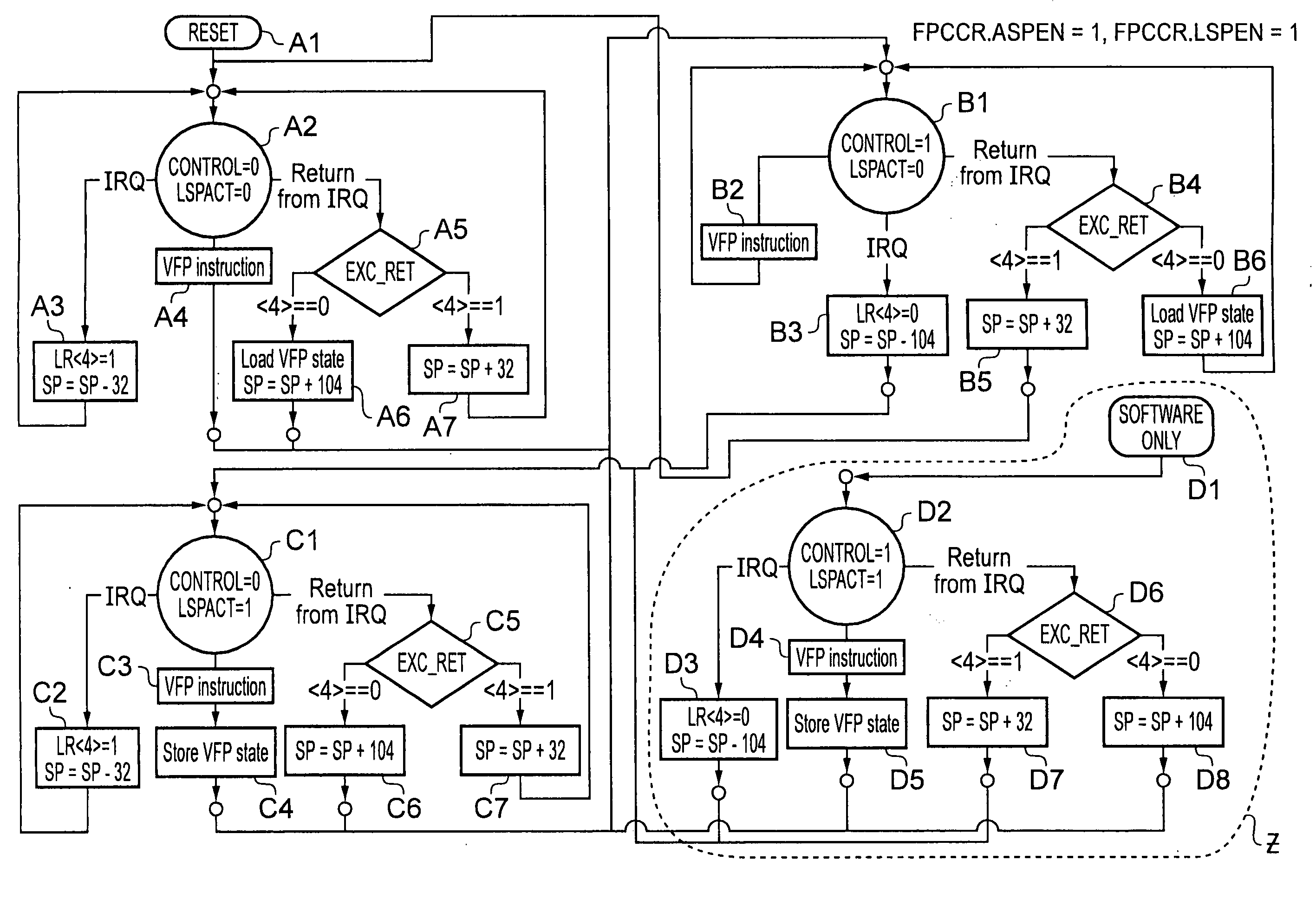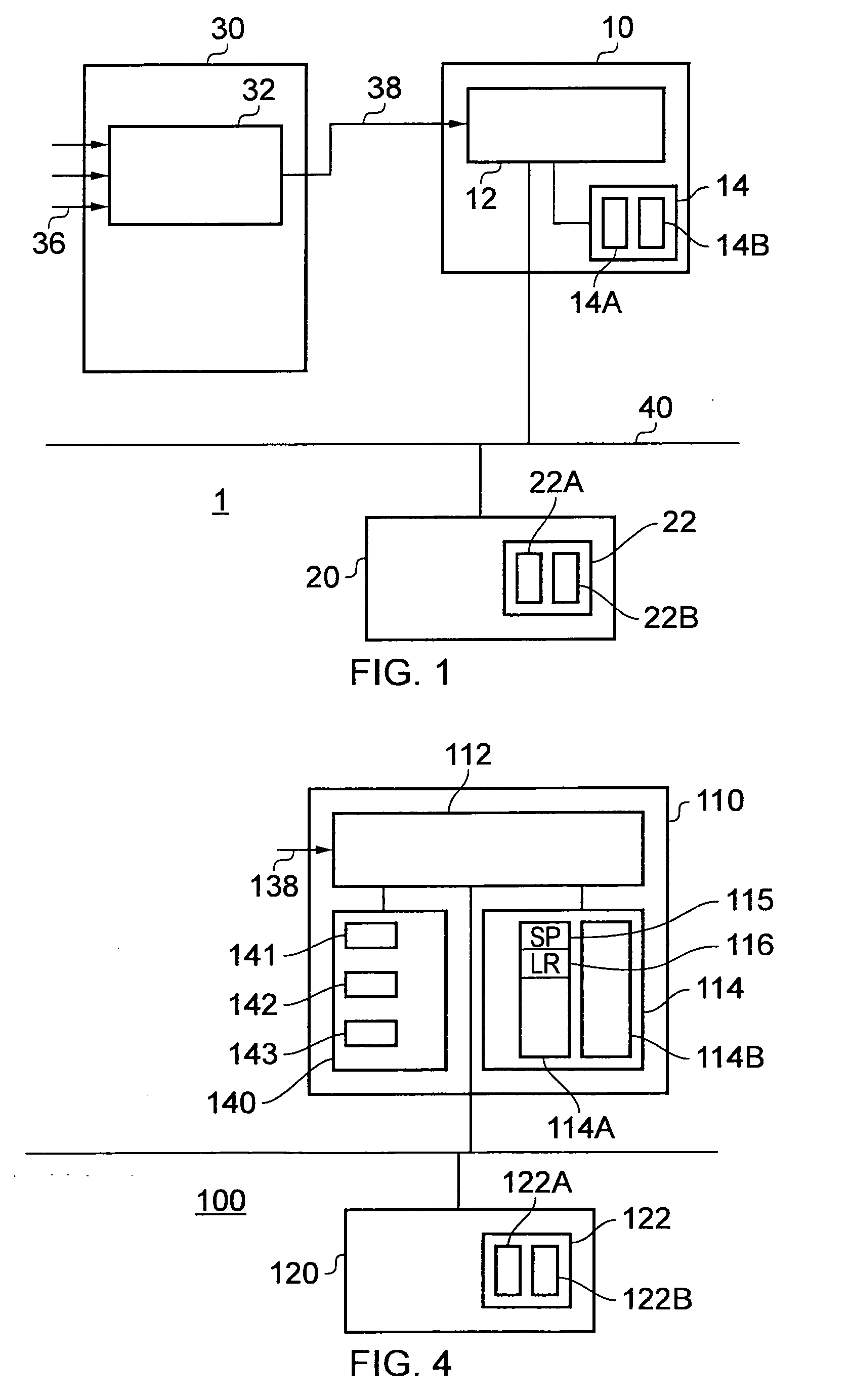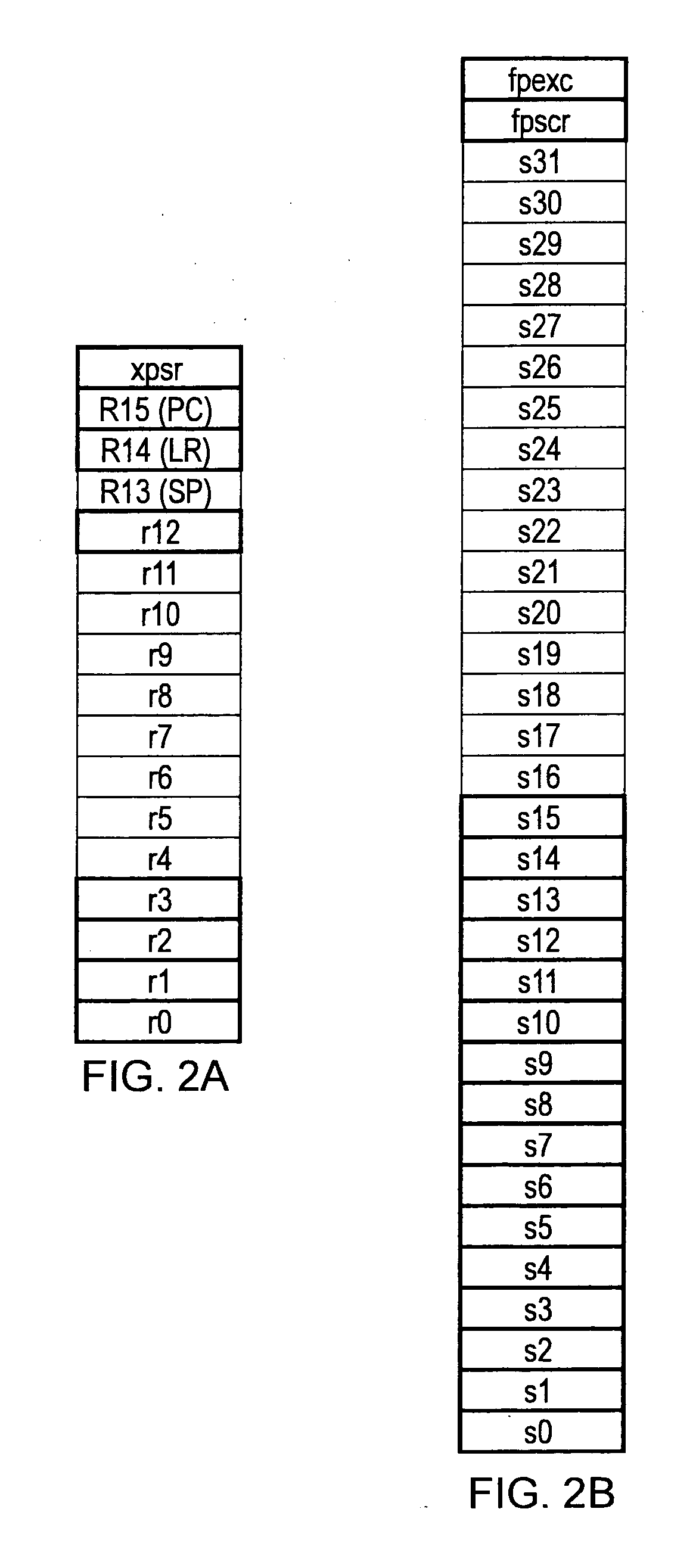Data processing apparatus and method
data processing technology, applied in the field of data processing apparatus and method, can solve the problem of providing backward compatibility with code intended to run on a data processing apparatus without hardware support, and achieve the effect of improving the timeliness of the state preservation process, processing faster, and high priority
- Summary
- Abstract
- Description
- Claims
- Application Information
AI Technical Summary
Benefits of technology
Problems solved by technology
Method used
Image
Examples
first embodiment
[0072]A first embodiment will now be described in which the selection of the integer or floating point state preservation function at the time of an interrupt request is conducted in dependence on whether the current data processing context (the context being interrupted) is an integer context which uses only the integer registers, or a floating point context using both the integer registers and the floating point registers. In particular; an integer state preservation function is performed if the current context is an integer context whereas a floating point state preservation function is performed if the current context is a floating point context.
[0073]Referring to FIG. 4, an apparatus 100 according to the first embodiment is schematically illustrated in which a data processor 110 has processing circuitry 112 which is response to an interrupt request 138 received from an interrupt controller to suspend a current context, preserve state information (register contents) relating to ...
second embodiment
[0129]A second embodiment will now be described in which a determination of which of the two sets of registers to store is made on the basis of (a) whether the current process is a thread, that is a process which has not been triggered by an interrupt, or a handler, that is a process which has been triggered by an interrupt, (b) whether the current process is an integer process which does not use the floating point registers or a floating point process which does use the floating point registers, and (c) whether the interrupting process is an integer process which does not use the floating point registers or a floating point process which does use the floating point registers.
[0130]Referring to FIG. 10, an example data processor 210 and interrupt controller 230 are schematically illustrated in which state circuitry 234 providing an indication of whether an interrupting process is an integer process or a floating point process is provided within the interrupt controller 230. The data...
PUM
 Login to View More
Login to View More Abstract
Description
Claims
Application Information
 Login to View More
Login to View More - R&D
- Intellectual Property
- Life Sciences
- Materials
- Tech Scout
- Unparalleled Data Quality
- Higher Quality Content
- 60% Fewer Hallucinations
Browse by: Latest US Patents, China's latest patents, Technical Efficacy Thesaurus, Application Domain, Technology Topic, Popular Technical Reports.
© 2025 PatSnap. All rights reserved.Legal|Privacy policy|Modern Slavery Act Transparency Statement|Sitemap|About US| Contact US: help@patsnap.com



